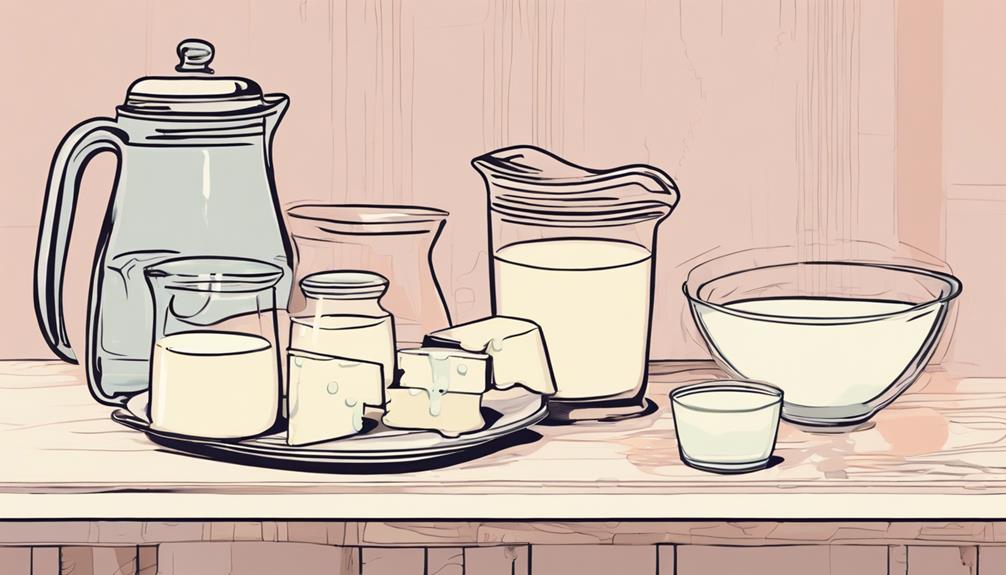See All: Cheese Making
Watch How To Do This Here…
YES! You can make cheese at home. Take our FREE 4-Part video training series to simplify cheesemaking for everyone. No waste. No overwhelm. No missing steps. You can make delicious, healthy cheese, even if you only have access to grocery store milk and regular kitchen equipment…
Click Here To Watch Step By Step Now
“I’ve been trying to make my own cheese at home, and I recently got some rennet, but I’m not sure how to dilute it properly for different cheese recipes. I’ve read conflicting advice online and want to make sure I get the best results. Can you help clarify the best approach for diluting rennet depending on the type of cheese I’m making? Thanks a lot!” Cheers, Patricia, Brisbane, Australia.
How Do You Dilute Rennet For Different Cheese Recipes?
Hi Patricia, it’s fantastic to hear you’re diving into the rewarding world of cheese making! Rennet is a pivotal ingredient in many cheese recipes, yet knowing how to properly dilute it can sometimes feel a bit puzzling. Let’s break it down so you can confidently tackle any cheese recipe that comes your way.
Understanding Rennet
Rennet is vital in cheese making because it helps coagulate milk, transforming it into curds and whey. There are two primary types of rennet: liquid and tablet (or powder) rennet. Liquid rennet is typically easier to measure and dilute, making it preferable for beginners. Tablet or powdered rennet requires dissolving in water first but is very effective and economical.
Why Dilution Matters
Undiluted rennet is too concentrated to add directly to milk. Proper dilution ensures the even distribution of rennet throughout the milk, leading to uniform coagulation and a better final product. Dilution also allows for control over the setting time and texture of the cheese.
General Guidelines for Dilution
Whether you’re using liquid or tablet rennet, always dilute it in non-chlorinated water. Chlorine can deplete the rennet’s effectiveness. Always use cool, filtered water for the best results.
Liquid Rennet
Liquid rennet typically needs to be diluted at a ratio of 1 part rennet to 20-40 parts water. However, this can vary based on the type of cheese you are making. Here are step-by-step instructions:
- Measure the Rennet: Follow the specific amount suggested in your recipe. Generally, this ranges from ¼ to ½ teaspoon for 2 gallons of milk.
- Prepare the Water: Use ¼ cup of non-chlorinated water for each ¼ teaspoon of rennet.
- Combine: Mix the measured rennet into the water right before adding it to your milk.
- Use Immediately: Diluted rennet loses its effectiveness quickly, so add it to the milk immediately after mixing.
Tablet or Powdered Rennet
- Tablets usually come in strengths of ¼ or ½ tablet for up to 2 gallons of milk. Ensure conversion according to your recipe.
- Crush tablets into a fine powder before diluting to help them dissolve better.
- For each ¼ tablet, dissolve in ¼ cup of non-chlorinated water.
- Allow the mixture to sit for a few minutes until fully dissolved.
- Add the solution directly to the milk, ensuring full incorporation.
Recipe-Specific Adjustments
Different cheeses require variations in rennet dilution due to differences in desired texture, coagulant strength, and recipes. Here’s a quick look at popular cheese types:
Soft Cheeses
For cheeses like brie, camembert, or cream cheese, use less rennet for a softer curd. You can often dilute rennet to a ratio of 1 part rennet to 30-40 parts water.
Hard Cheeses
Hard cheeses like cheddar or parmesan require a firmer curd, so use a stronger rennet solution. Dilute at a ratio of 1 part rennet to 20-25 parts water.
Pasta Filata Cheeses
For stretchable cheeses like mozzarella, which require a specific texture, follow exact recipe guidelines. Generally, a ratio of 1 part rennet to 25-30 parts water works well.
Culture and Temperature Considerations
Always add rennet after proper culturing and warming of the milk. Temperature impacts rennet’s effectiveness, with the optimal range being 85-105°F (30-40°C). Cold milk causes slow coagulation, while overly warm milk can damage the delicate enzyme structure.
Common Problems and Troubleshooting
Sometimes, things don’t go as planned. Here are common issues and potential fixes:
- Curds Not Forming: Ensure rennet is fresh and properly diluted. Check milk temperature and pH levels. Avoid over-pasteurized or ultra-pasteurized milk.
- Weak or Soft Curds: Use slightly more rennet or reduce water dilution. Check milk quality and correct temperature.
- Grainy or Brittle Curds: Overheating milk or adding rennet too early can cause this. Be patient and follow steps closely.
Storing Rennet
Store liquid rennet in the fridge to maintain potency. Tablets can be stored in a cool, dry place. Avoid exposing rennet to extreme temperatures or light.
Extra Tips for Success
- Use precise measuring tools for both rennet and water.
- Adjust rennet amounts based on your own observations and outcomes.
- Note down variations in milk batches, as seasonal changes affect milk composition.
- Experiment and practice; cheese making is both science and art!
Final Thoughts…
Patricia, thanks for reaching out! Remember, mastering the dilution of rennet is a wonderful first step toward making delectable cheese. Just keep experimenting and tweaking based on the insights I’ve shared today. Each batch you make will bring you closer to becoming a cheese-making expert. Happy cheese making!
Return To: Cheese Making
Free Step By Step Cheese Making Videos…
YES! You can make cheese at home. Take our FREE 4-Part video training series to simplify cheesemaking for everyone. No waste. No overwhelm. No missing steps. You can make delicious, healthy cheese, even if you only have access to grocery store milk and regular kitchen equipment…

